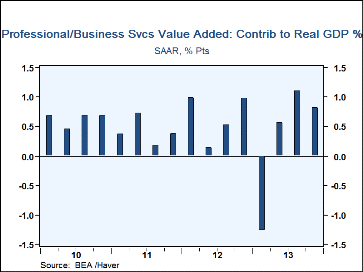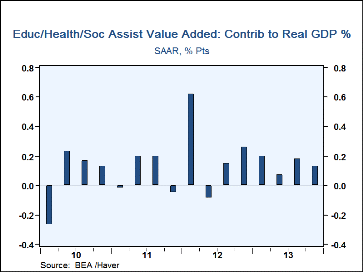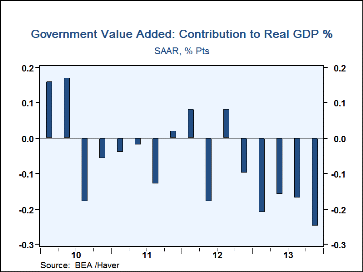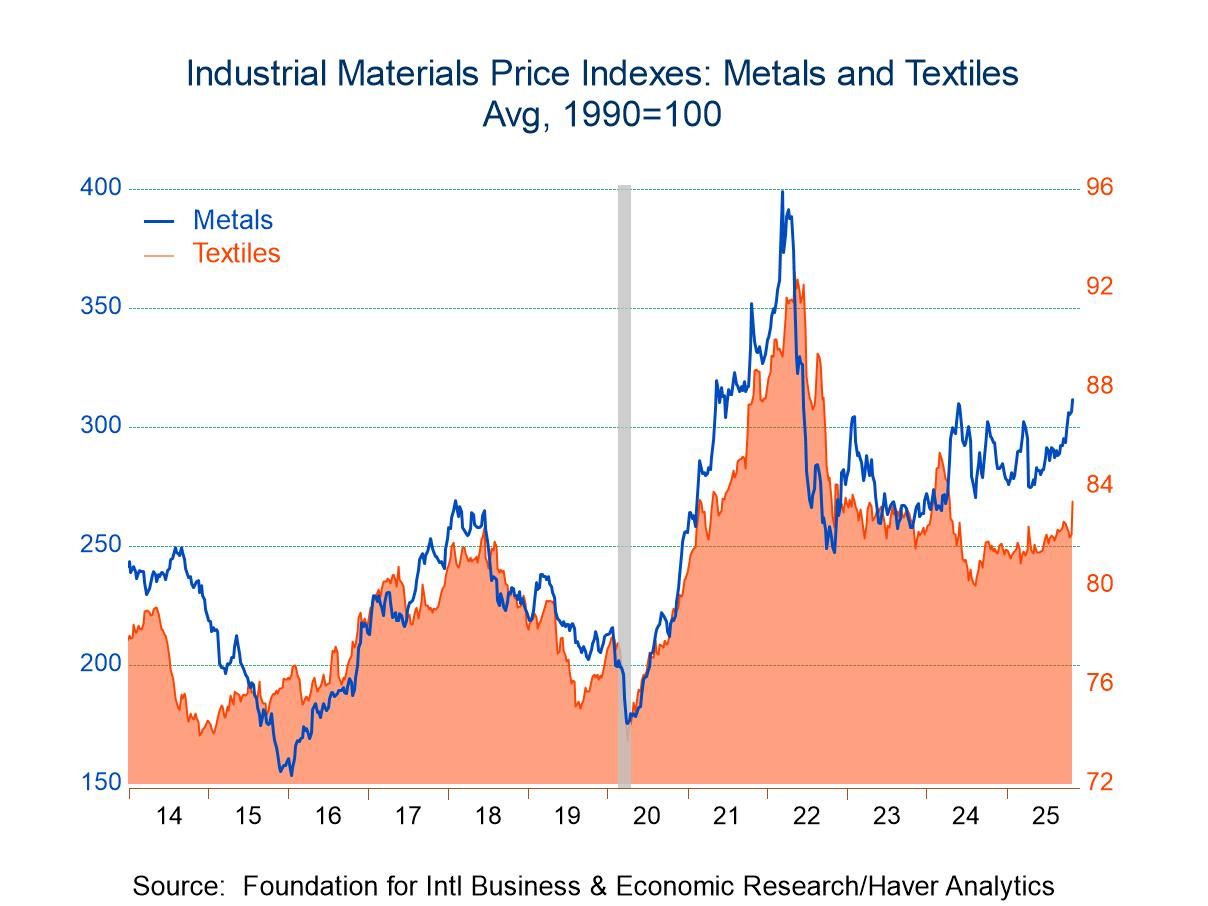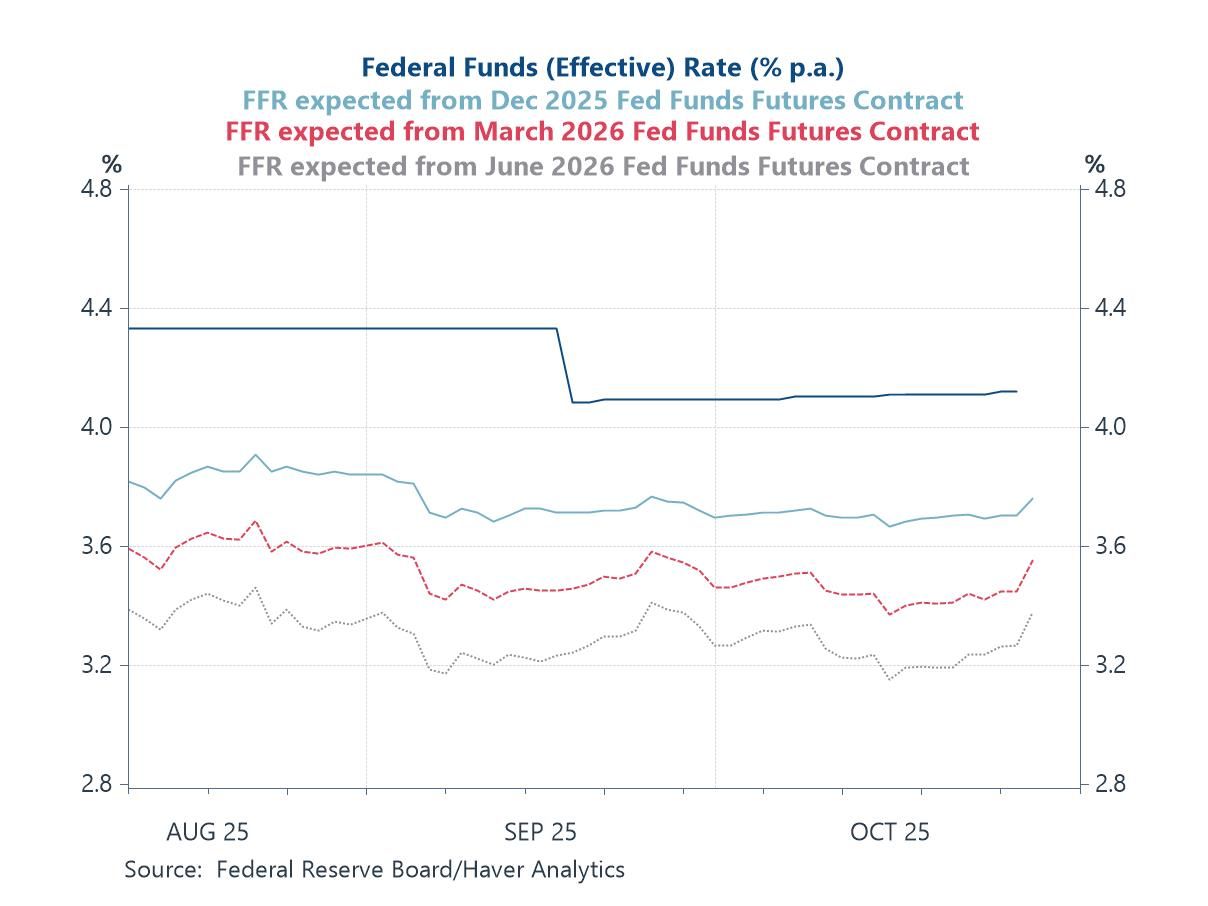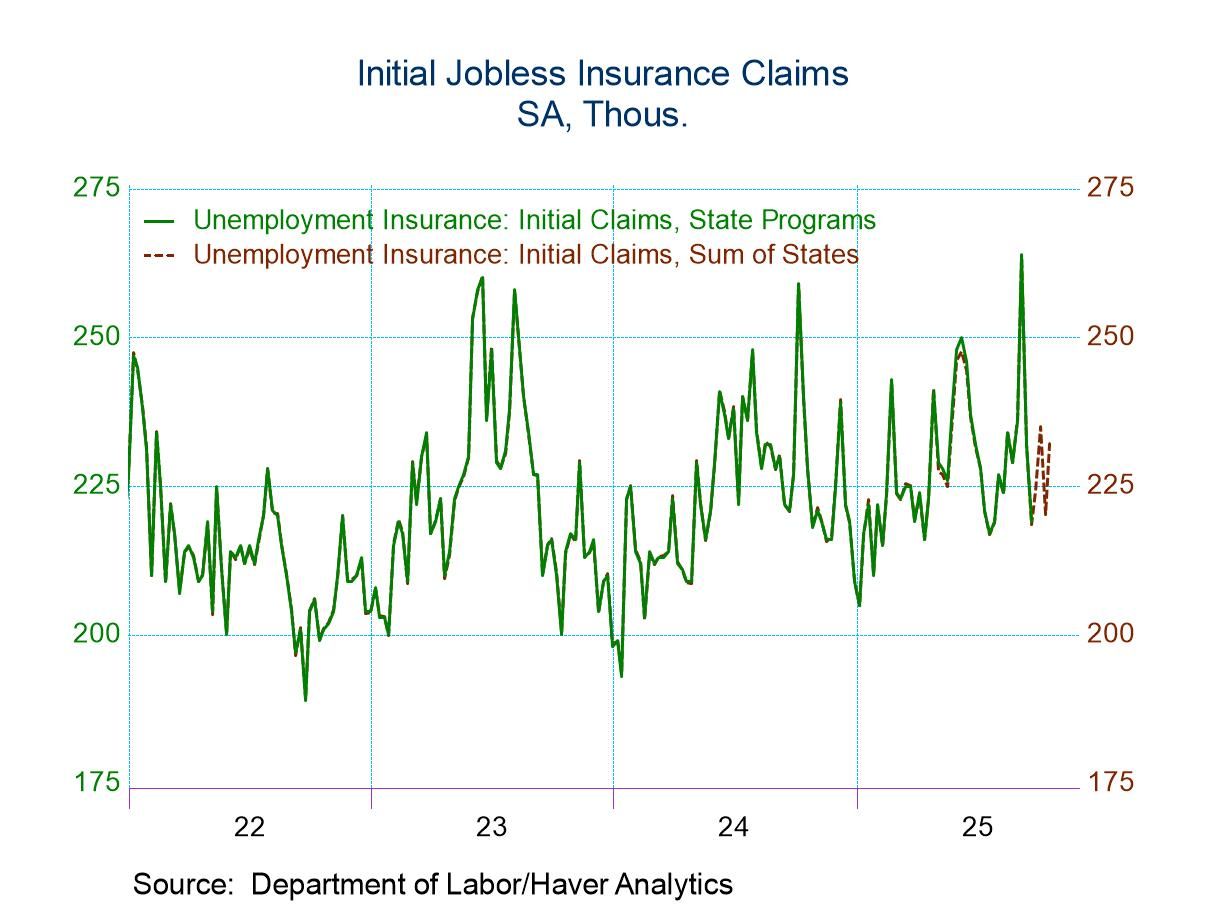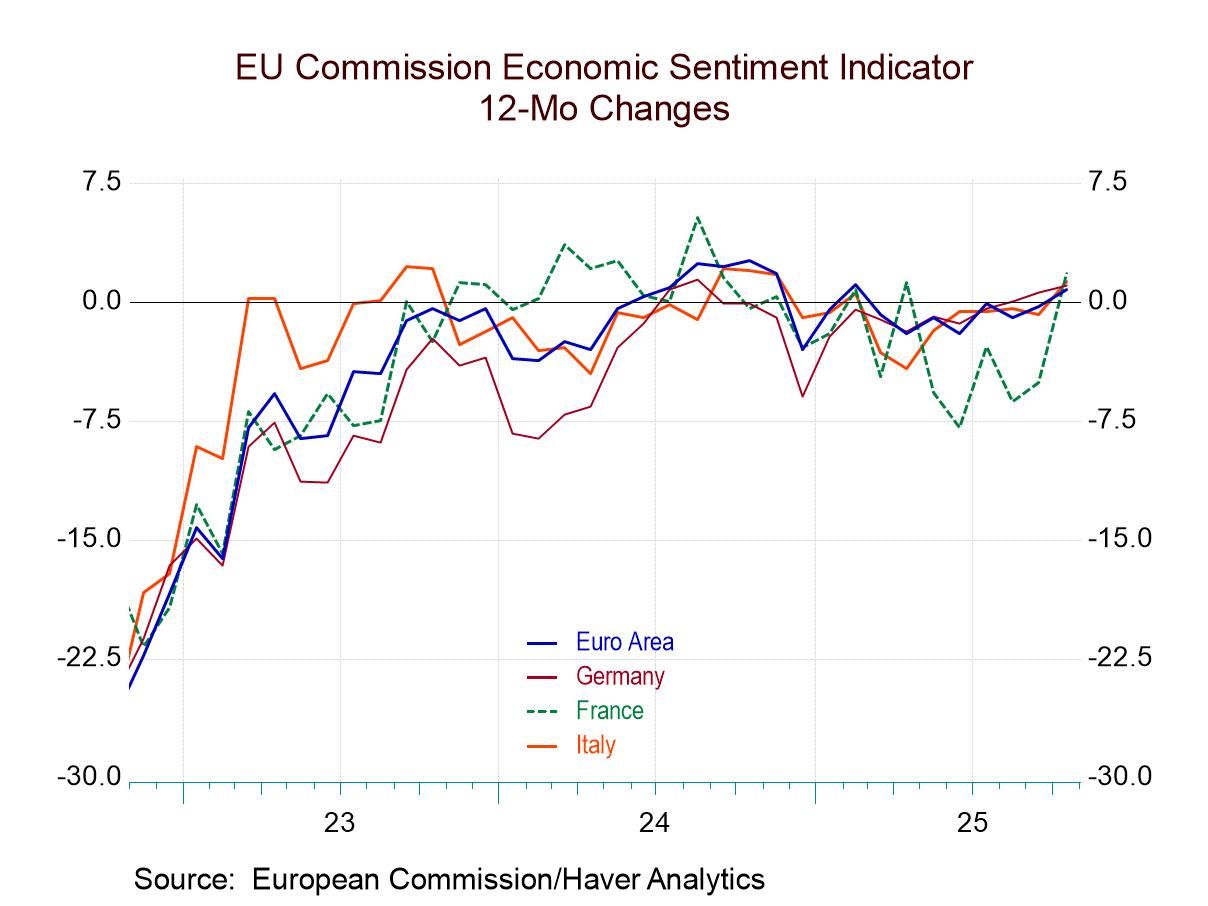 Global| Apr 25 2014
Global| Apr 25 2014U.S. Factory and Business Sectors Drive GDP Growth
by:Tom Moeller
|in:Economy in Brief
Summary
Industry output figures for Q4'13, released today by the Commerce Department, provide a detailed value-added break-out of economic performance. Overall economic growth during 2013 averaged 2.6% per quarter, the quickest over the last [...]
Industry output figures for Q4'13, released today by the Commerce Department, provide a detailed value-added break-out of economic performance. Overall economic growth during 2013 averaged 2.6% per quarter, the quickest over the last three years. The figures show that three sectors accounted for nearly one half of the growth. The factory sector contributed slightly more than one-quarter of the advance. The professional and business services sectors gave ten percent to growth while the finance, insurance and real estate industries provided the same ten percent. These are fairly healthy percentages given that, collectively, the three sectors account for just over one-quarter of total payroll employment.
While construction, mining, and education, health care and social assistance sectors account for a meaningful seven percent of total employment, they contributed negligibly to overall economic growth last year. Low capital-to-labor ratios explain most of the meager productivity in these sectors. Then there's the government sector. During all of last year, it detracted slightly from economic growth although it accounted for 16% of total employment.
Workforce downsizing has very much become the rage as budget cutting and profit maximization are key economic priorities. In the factory sector, this clearly has been enhancing corporate profitability. In other private sectors, limited pools of skilled labor are always an issue. In the government sector, workforce attrition may reduce spending if budget balance is a goal.
These National Income figures are available in Haver's USNA database.
| Contributions to Real GDP Change (%, AR) | Q4'13 | Q3'13 | Q2'13 | Q1'13 |
|---|---|---|---|---|
| Total Real GDP | 2.6 | 4.1 | 2.5 | 1.1 |
| Private Sector | 3.1 | 4.3 | 2.6 | 1.3 |
| Manufacturing | 1.2 | 0.5 | 0.6 | 1.1 |
| Professional & Business Services | 0.8 | 1.1 | 0.6 | -1.3 |
| Wholesale Trade | 0.4 | 0.4 | 0.1 | 0.1 |
| Mining | 0.3 | 0.0 | 0.3 | -0.4 |
| Information | 0.3 | 0.4 | 0.1 | 0.6 |
| Art, Entertainment, Recreation, Accommodation and Food Services | 0.3 | 0.0 | -0.1 | 0.1 |
| Education, Health Care and Social Assistance | 0.1 | 0.2 | 0.1 | 0.2 |
| Finance, Insurance & Real Estate | 0.0 | 0.8 | 0.9 | -0.5 |
| Agriculture | -0.1 | 0.2 | 0.1 | 1.2 |
| Retail Trade | -0.1 | 0.3 | -0.1 | 0.4 |
| Construction | -0.2 | 0.2 | 0.1 | -0.1 |
| Public Sector | -0.3 | -0.2 | -0.2 | -0.2 |
Tom Moeller
AuthorMore in Author Profile »Prior to joining Haver Analytics in 2000, Mr. Moeller worked as the Economist at Chancellor Capital Management from 1985 to 1999. There, he developed comprehensive economic forecasts and interpreted economic data for equity and fixed income portfolio managers. Also at Chancellor, Mr. Moeller worked as an equity analyst and was responsible for researching and rating companies in the economically sensitive automobile and housing industries for investment in Chancellor’s equity portfolio. Prior to joining Chancellor, Mr. Moeller was an Economist at Citibank from 1979 to 1984. He also analyzed pricing behavior in the metals industry for the Council on Wage and Price Stability in Washington, D.C. In 1999, Mr. Moeller received the award for most accurate forecast from the Forecasters' Club of New York. From 1990 to 1992 he was President of the New York Association for Business Economists. Mr. Moeller earned an M.B.A. in Finance from Fordham University, where he graduated in 1987. He holds a Bachelor of Arts in Economics from George Washington University.



